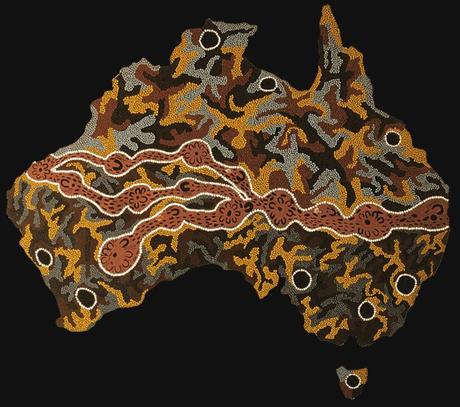Humans have lived in Australia for nearly 50,000 years. This is a truly incredible time-depth that is difficult to comprehend. When Europeans finally figured out how to get there, they encountered Aboriginal people whose material technology was minimalist and relatively simple. This caused Europeans to assume, wrongly, that Aboriginals had equally simple or “primitive” ideas. This mistaken assumption was based on the idea that technological and cosmological complexity go hand in hand. As one advances, so does the other. This is part of the progressive myth. There is no necessary linkage between technological advance and complexity of thought or worldviews.
Had Europeans not been enveloped in this myth, they might have been able to see that Aboriginal technology revolved around knowledge rather than things. This technology, known as the Dreaming, is enormously rich, sophisticated, and complex. It is the apex achievement of 50,000 years during which Aboriginals explored and occupied an entirely new land, becoming deeply attached to it in the process.
This attachment is so profound that place, rather than time, constitutes the fundamental category of Aboriginal being and perception. In the western world, we privilege time and consider it fundamental, as if the only way of being in the world and experiencing life is temporally. The Aboriginal experience tells us it is not so — there are other ways of being and perceiving. Our categories are not, in other words, universal or essential. If Kant had known about Aborigines, the Dreaming, and the “faculty of place” (rather than “time and space“), our perception of fundamental reality might be radically different than it is today. At a minimum, our philosophy would have been much enriched.
With these things in mind, I can’t help but wonder how Aboriginal understandings of place were impacted by the last ice age. As Alan Walker and colleagues indicate in an article to appear in the December 2013 issue of the Journal of Archaeological Science, the impacts were massive:
A number of models, developed primarily in the 1980s, propose that Aboriginal Australian populations contracted to refugia – well-watered ranges and major riverine systems – in response to climatic instability, most notably around the Last Glacial Maximum (LGM) (∼23–18 ka). We evaluate these models using a comprehensive continent-wide dataset of archaeological radiocarbon ages and geospatial techniques. Exploring data between 25 and 12 ka, we find a refugia-type hunter-gatherer response during the LGM (∼23–18 ka) and again during the Antarctic Cold Reversal (ACR) (∼14.5–12.5 ka), with expansion in the intervening period. Several refugia persist between 25 and 12 ka. Areas devoid of human activity (‘barriers’) include the main desert regions, especially in the south and west of the continent, although some of these may be the result of an absence of archaeological fieldwork. Point dispersal pattern analysis indicates a reduction in occupied territory of nearly 80% during the LGM. A reduction of close to 50% was also evident during the ACR. A large number of the refugia were in close proximity to glaciated areas during the LGM, and probably benefitted from increased summer snowmelt along the major river systems. The remaining refugia are likely the result of a range of local environmental and resource factors.
When thinking about ice ages, we don’t often think about Australia. It was clearly a difficult time for Aboriginals, who were forced to abandon 80% of the land previously occupied. That is an astonishing loss of place. The migrations and memories of these events were surely transformative and may still echo in the tracks, places, or “refugia” of the Dreaming.


